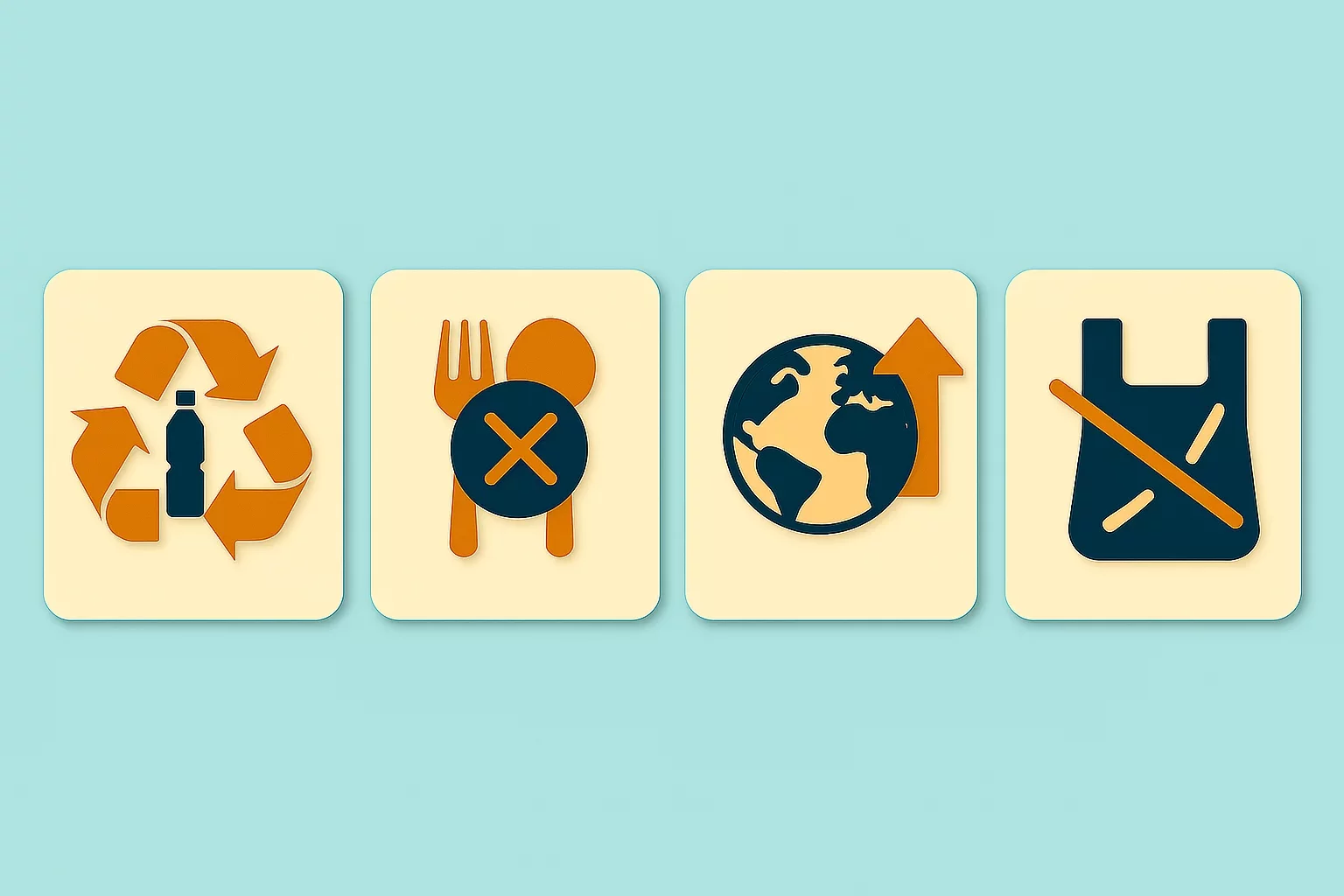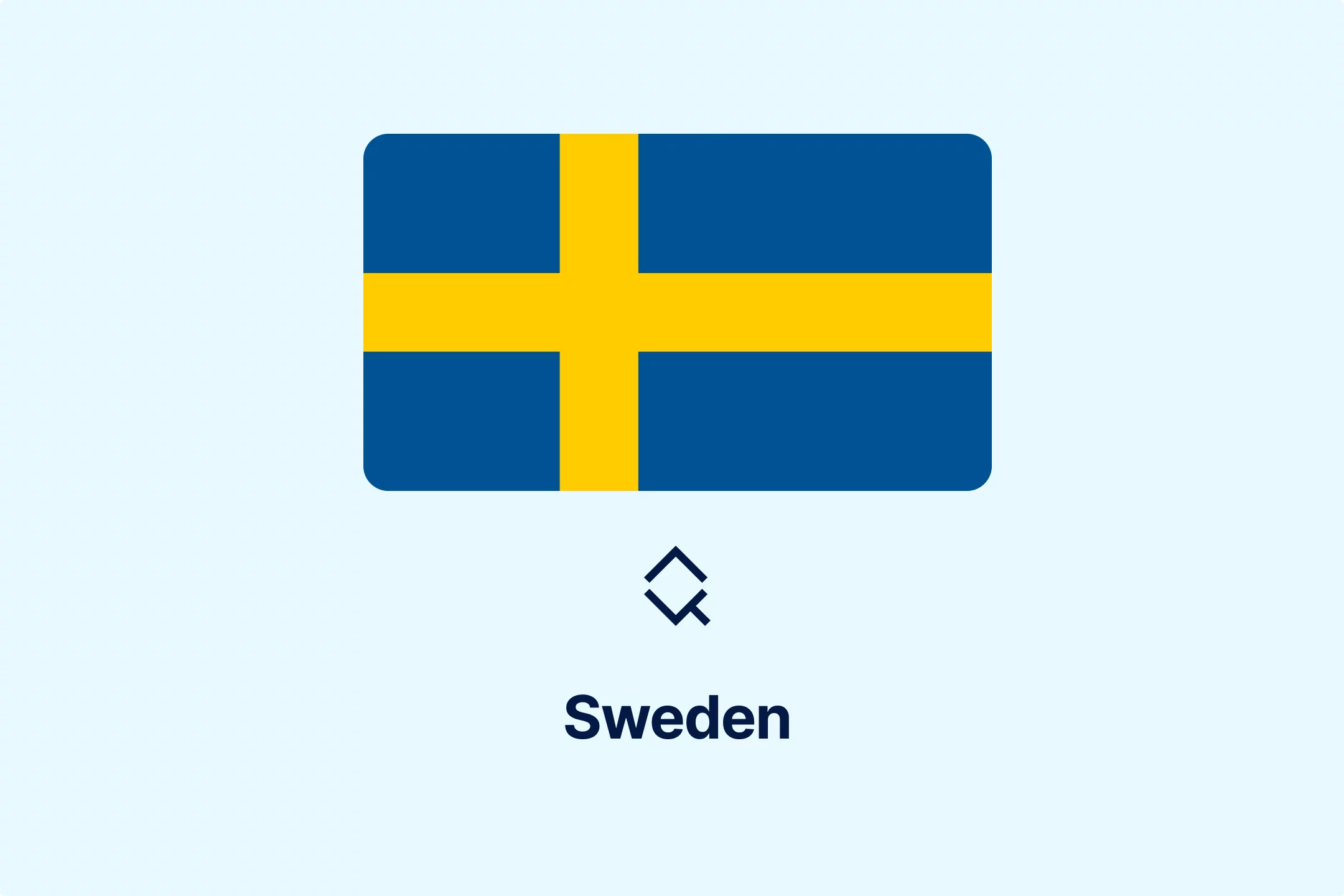Comprehensive Guide to VAT in Sweden: Rates, Rules, & Registration Explained
.png)
| Standard VAT Rate | Reporting Frequency | VAT Rate for ESS | Digital Reporting | Reporting Currency | |
|---|---|---|---|---|---|
| 25% | Monthly/Quarterly/Anually | 25% | Resident | B2G | SEK |
| Non-Resident | B2G | ||||
VAT in Sweden - Three Types of Rates
There are three types of VAT rates in Sweden:
Standard VAT rate,
Reduced VAT rates, and
Zero VAT rate.
| Estonia VAT Rate | Type | Applicability |
|---|---|---|
| 22% | Standard VAT Rate | Applies to all taxable supplies in the country, besides those that can benefit from reduced rates, zero rates, or be VAT-exempted. |
| 9% | Reduced VAT Rate | Applies to accommodation services, medicinal products, books, and educational literature, both on a physical medium and electronically. |
| 5% | Reduced VAT Rate | Applies to press publications in any form. |
| 0% | Zero VAT Rate | Applies to intra-community supply of goods and export of goods to non-EU countries. |
How Much is VAT in Sweden’s Regions?
Similarly to most EU Member States, Sweden does not have special VAT rates for specific regions. This means standard, reduced, and zero VAT rates for goods and services are applicable throughout Sweden.
VAT Registration Threshold
In addition to the provisions and information stated in the VAT Sweden Law, the Swedish Tax Agency or Skatteverket provides all the necessary information and clarification on VAT-related matters, including the VAT registration threshold.
VAT rules and regulations in Sweden state that there is an exemption from VAT registration if the annual turnover is below SEK 80,000. However, this VAT registration threshold of SEK 80,000 only applies to resident taxable persons. Therefore, there is no VAT threshold in Sweden for non-resident taxable persons.
Since Sweden is an EU Member State, it incorporated the EU-wide EUR 10,000 VAT registration threshold for intra-Community distance sales of goods and B2C supplies of services. No threshold is defined under EU or Sweden VAT rules concerning the electronically supplied services.
Types of Taxable Activities in Sweden
Under the VAT Sweden Law, a taxable person can be any individual or business that independently carries out an economic activity, regardless of its purpose or results.
Activities that fall under the scope of VAT and are considered taxable include supplying goods and services in Sweden for a fee, receiving reverse-charge services by a taxable person in Sweden, and exporting and importing goods.
VAT Registration Process
Understanding the VAT registration process is vital for taxable persons, such as domestic or foreign businesses, under the VAT rules required to register for VAT when the requirements are met.
Sweden VAT Registration for Domestic Businesses
Domestic businesses that are not VAT exempt and cannot benefit from the small business exemption scheme, meaning those whose annual turnover is above SEK 80,000 and those that want to register for VAT in Sweden voluntarily, should follow several steps.
Those steps include using the business registration form when registering a business and applying for F tax, FAT tax, employment registration, and VAT registration. The VAT registration form can be submitted electronically or printed and submitted in person to the nearest Swedish Tax Agency office.
Sweden VAT Registration for Foreign Businesses
Foreign businesses that should register for VAT in Sweden should use the government e-service Registration of foreign companies in Sweden (RUFS). Documents needed to complete this procedure include a register extract showing that the legal person exists in a foreign country, documents proving freedom from debt, and other documents such as customs documents or investments for the business in Sweden.
Businesses established in another EU country do not need to appoint a tax representative to complete VAT registration. However, they may choose to do so if they find it beneficial for their businesses. On the other hand, appointing a tax representative is mandatory for non-EU companies.
VAT Returns in Sweden
All VAT-registered taxable persons should submit VAT returns, even when there is no VAT to report. In those cases, a so-called nill or zero VAT return is submitted. VAT returns are filed once a year, quarterly, or monthly. Filing frequency depends on the annual turnover of the taxable person.
If the annual turnover is SEK 1 million, yearly or quarterly VAT returns are due. Quarterly or monthly VAT returns are filled for up to SEK 40 million turnovers. Finally, a monthly VAT return should be submitted if the turnover exceeds SEK 40 million.
Penalties for Failure to File Tax Return
Not complying with filing deadlines and rules for VAT returns will result in penalties. Companies and individuals that breach these rules should know that they should allocate additional financial resources for non-compliance.
All taxable persons who do not file their VAT return on time will first receive a notification of a penalty fee from the Swedish Tax Agency. Taxable persons can reply to that notice with their comments regarding violating the VAT return rules. Once the Swedish Tax Agency completes the overview of the comments provided by the taxable person, a penalty of SEK 625 may be imposed.
VAT Rules for Electronically Supplied Services
The EU VAT Directive 2006/112/EC reshaped the landscape on the EU level. It influenced EU Member States, EU businesses, and all others engaged in supplying electronically supplied services (ESS). Under the EU VAT Directive, ESS are services provided automatically through the Internet or similar networks. In addition, human input is also essential for a service to be considered ESS. Therefore, services that rely heavily on human intervention are not considered ESS.
In practice, many other terms, such as digital services, digital products, and electronic services, coexist with ESS. However, they all refer to the same type of services.
As an EU Member State, Sweden implemented these EU-harmonized taxability rules for ESS into its national legislation.
Taxability Rules for ESS:
Taxability rules for ESS mainly refer to the B2B and B2C supply of the ESS, as well as the distance sales of goods and ESS supply.
Regarding the B2B supply of the ESS, general place of supply rules for determining the palace of supply apply. For the B2C supply of the ESS, the destination principle is used to determine the place of supply. Under the destination principle, the place of supply is where the consumer resides.
The EUR 10,000 threshold is the key to rules regarding distance sales of goods and ESS supply. Suppose suppliers' annual turnover is below the EU-wide EUR 10,000. In that case, they can decide whether to apply the VAT rates of their home country or register for the One Stop Shop (OSS) system voluntarily and apply the rules defined under the OSS. However, if the annual turnover is above a set threshold, the VAT rate of the consumer's country of residence applies, e.g., the VAT rate Sweden.
How much is VAT in Sweden on ESS?
The Sweden VAT rate for ESS is 25%.
E-Commerce Rules
The 2021 E-Commerce VAT Reforms changed VAT rules on the EU level and initiated changes to national legislation related to indirect taxes in the EU and worldwide. The E-commerce reformatory package made VAT compliance in the EU more accessible and created a more suitable VAT system to tackle the challenges in the digital economy.
One of the most critical reforms includes the introduction of the EUR 150 EU-wide threshold for imports of low-value goods from non-EU countries and territories. In this process, the previously defined EUR 22 threshold was removed, and a more simplified scheme for VAT reporting was established.
Regarding intra-Community distance sales, the 2021 reform removed thresholds defined by each EU Member State on national levels and replaced them with a unified EU threshold.
Deemed supplier rules that were introduced put digital platforms in a position to be liable for VAT in some specified situations.
Part of the reform was further developing the reporting system and schemes established by the Mini One Stop Shop (MOSS) system. Therefore, the previously established Union and non-Union schemes were enlarged, and reporting rules were updated and upgraded. In addition to this, a new Import One Stop Shop (IOSS) scheme was introduced, thus transforming MOSS into the One Stop Shop (OSS) system with three schemes:
Union Scheme,
Non-Union Scheme,
Import Scheme.
VAT EU Reporting
VAT-registered businesses in Sweden should submit an EC Sales List, also known as a Recapitulative Statement and Intrastat reports, for their intra-EU transactions.
EC Sales List
The EC Sales List (ESL) is a type of tax return that includes all relevant information for all intra-EU supply of goods and services between EU VAT-registered taxable persons. In Sweden, the ESL is submitted monthly electronically via the government e-service portal or in paper form. The e-service is also used to respond to queries, view receipts, and request permission to submit ESL quarterly.
If the ESL return is submitted electronically, the deadline is the 25th of the month following the reporting period. In contrast, the deadline for paper forms is the 20th of the month following the reporting period.
Intrastat
Intrasta report is a statistical report that includes data on intra-EU supply of goods between EU VAT-registered taxable persons. For Intrastat reporting obligation to trigger import or export threshold, also knows and arrivals and dispatches threshold should be exceeded.
The Intrastat thresholds in Sweden are set at SEK 15 million for arrivals and SEK 4.5 million for dispatches.
Digital Reporting
Regarding the digital reporting requirements, only specific e-invoicing rules are in effect in Sweden. Except for those e-invoicing rules, there are no other digital reporting requirements that taxable persons should meet.
Local Businesses
Local taxable persons, like local businesses, should transmit B2G e-invoices when selling to public authorities in Sweden. All e-invoices are sent to the Swedish Tax Agency via the Peppol network.
Non-Resident Businesses
Non-resident businesses should follow the same mandatory B2G e-invoicing rules as the local businesses.

Featured Insights

Angola’s E-Invoicing Mandate: Phased Implementation Continues Into 2026
🕝 December 10, 2025
VAT Deduction and Business Succession: When Do Advisory Costs Serve the Company’s Interest?
🕝 December 8, 2025
Europe’s Plastic Fiscal Shift: Why Italy’s Plastic Tax Now Starts in 2027
🕝 December 3, 2025
The Decline of Low-Value Import Exemptions: Closing Gaps in Cross-Border E-Commerce
🕝 November 20, 2025More News from Sweden
Get real-time updates and developments from around the world, keeping you informed and prepared.
-e9lcpxl5nq.webp)

-6wv5h5eyyd.webp)










